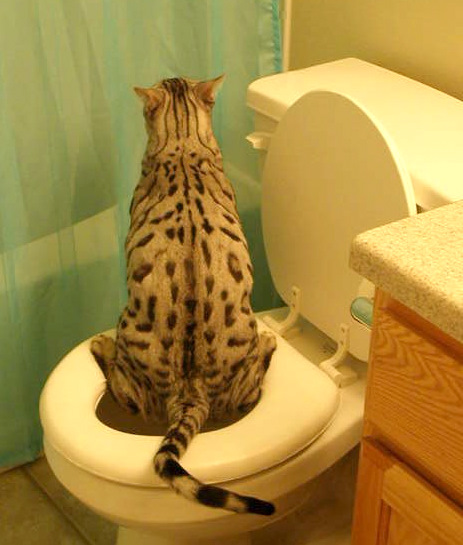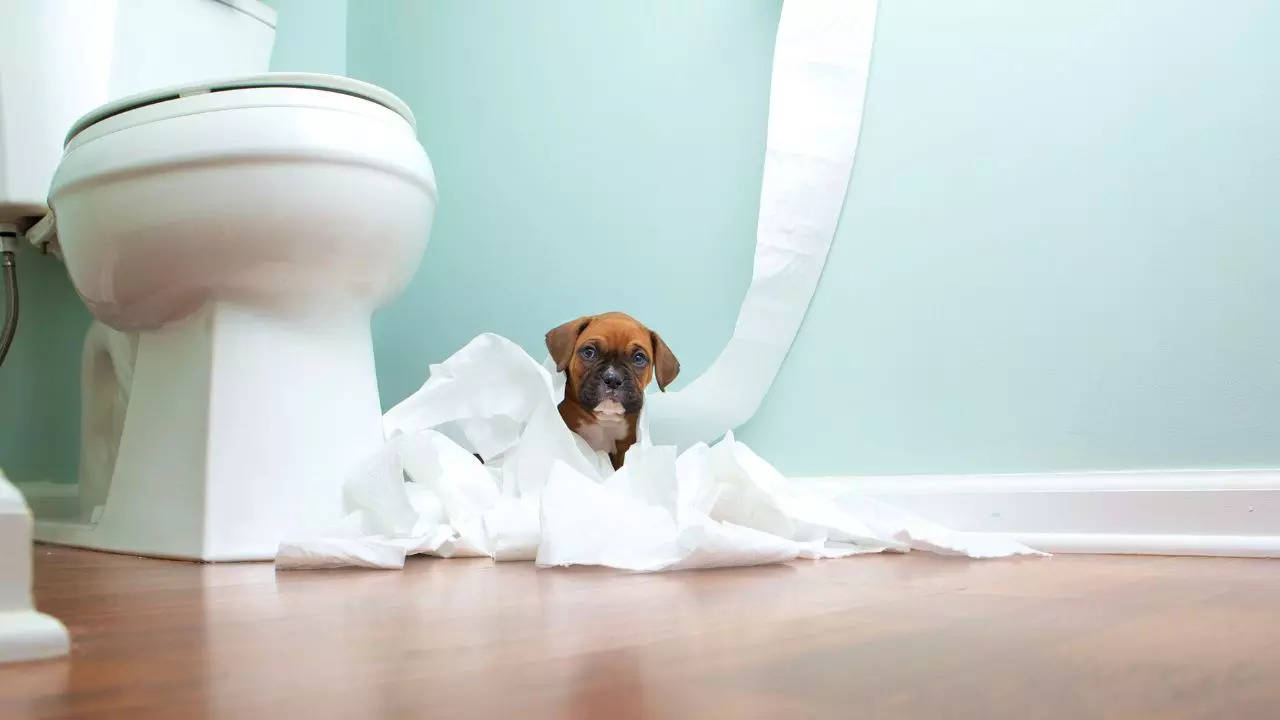When You Have to Avoid Flushing Animal Waste Down the Toilet
When You Have to Avoid Flushing Animal Waste Down the Toilet
Blog Article
What're your opinions about Why you should never flush dog poop down the toilet?

When it comes to getting rid of waste, particularly animal waste, many people typically resort to the hassle-free choice of flushing it down the toilet. Nevertheless, this relatively simple remedy can have significant consequences for the environment and public health. In this write-up, we'll explore why flushing animal waste down the toilet is a poor concept and provide alternative approaches for appropriate disposal.
Introduction
Proper waste disposal is crucial for preserving ecological sustainability and public health. While it might appear safe to purge animal waste down the commode, it can bring about numerous concerns, both for the environment and human well-being.
Risks of flushing pet waste
Environmental impact
Purging pet waste introduces harmful microorganisms and pathogens into waterways, which can negatively influence marine communities. These pathogens can contaminate water resources and harm aquatic life, interfering with delicate ecological communities.
Public health concerns
Animal waste includes damaging bacteria such as E. coli and Salmonella, which can present major wellness risks to people. Purging pet waste down the commode can contaminate water materials, resulting in the spread of conditions and infections.
Alternatives to flushing
Rather than purging animal waste down the toilet, there are several alternate disposal techniques that are much more environmentally friendly and hygienic.
Composting
Composting pet waste is an environmentally friendly method to dispose of it. By composting, organic matter is broken down right into nutrient-rich dirt, which can be utilized to fertilize yards and plants.
Landfill disposal
Dealing with pet waste in a land fill is an additional alternative. While not as eco-friendly as composting, it is a more secure option to flushing, as it protects against the contamination of water sources.
Animal garbage disposal systems
There are specialized animal garbage disposal systems readily available that safely and hygienically throw away animal waste. These systems often use enzymes to break down waste and eliminate odors.
Actions to appropriate pet garbage disposal
To check here make certain proper disposal of pet waste, adhere to these actions:
Scooping and getting waste
Consistently scoop and bag pet waste utilizing naturally degradable bags. This stops waste from contaminating the environment.
Utilizing designated waste bins
Dispose of bagged animal waste in assigned waste containers, such as compost bins or garbage dump bins. Stay clear of flushing it down the bathroom at all prices.
Cleaning litter boxes and pet locations regularly
Regularly clean can and pet dog locations to avoid the buildup of waste and microorganisms. Use pet-safe cleansing products to maintain health.
Benefits of appropriate disposal methods
Taking on proper disposal approaches for animal waste uses several benefits:
Lowered environmental pollution
Appropriate disposal approaches reduce the danger of environmental pollution, securing rivers and environments from contamination
Decreased risk of water contamination.
By preventing flushing animal waste down the bathroom, the threat of water contamination is considerably minimized, safeguarding public health.
Improved cleanliness and hygiene
Appropriate disposal techniques promote better sanitation and hygiene, creating a safer setting for both humans and animals.
Conclusion
Finally, purging animal waste down the toilet is dangerous to the atmosphere and public health. By embracing alternative disposal methods and following correct waste monitoring methods, we can decrease the unfavorable impact of animal waste and contribute to a cleaner, healthier earth.
What To Do With Dog Poo – The Do's And Don'ts Of Disposing Of Faeces
Dog poo bins
Some councils provide dedicated dog waste bins in popular dog-walking areas that can take dog poo that has been bagged but you can legally dispose of dog waste in any public litter bin, as long as it is securely bagged. This also applies to your wheelie bin at home.
Do not flush
Water companies do not recommend flushing dog faeces down the toilet because certain parasites can survive the water processing treatment and are potentially harmful to humans. You should also never consider flushing dog poo that has been bagged down the toilet as the bags will not break down and instead create severe blockages in the sewage system.
In the woods
The Forestry Commission promotes a ‘stick and flick’ method for dealing with waste in the woods. This means finding a stick and using it to flick any poo from off the path so that it is out of the way of other walkers. You could also bury it as long as it is not in an area where there might be livestock.
Livestock
Parasites found in dog poo can be transmitted to livestock if they inadvertently eat infected faeces that has been left on grazing land. This could result in the death of sheep or abortion in cattle so you should always make sure you pick up your dog’s waste in fields where livestock could be present.

Regularly clean can and pet dog locations to avoid the buildup of waste and microorganisms. Use pet-safe cleansing products to maintain health.
Benefits of appropriate disposal methods
Taking on proper disposal approaches for animal waste uses several benefits:
Lowered environmental pollution
Appropriate disposal approaches reduce the danger of environmental pollution, securing rivers and environments from contamination
Decreased risk of water contamination.
By preventing flushing animal waste down the bathroom, the threat of water contamination is considerably minimized, safeguarding public health.
Improved cleanliness and hygiene
Appropriate disposal techniques promote better sanitation and hygiene, creating a safer setting for both humans and animals.
Conclusion
Finally, purging animal waste down the toilet is dangerous to the atmosphere and public health. By embracing alternative disposal methods and following correct waste monitoring methods, we can decrease the unfavorable impact of animal waste and contribute to a cleaner, healthier earth.
What To Do With Dog Poo – The Do's And Don'ts Of Disposing Of Faeces
Dog poo bins
Some councils provide dedicated dog waste bins in popular dog-walking areas that can take dog poo that has been bagged but you can legally dispose of dog waste in any public litter bin, as long as it is securely bagged. This also applies to your wheelie bin at home.
Do not flush
Water companies do not recommend flushing dog faeces down the toilet because certain parasites can survive the water processing treatment and are potentially harmful to humans. You should also never consider flushing dog poo that has been bagged down the toilet as the bags will not break down and instead create severe blockages in the sewage system.
In the woods
The Forestry Commission promotes a ‘stick and flick’ method for dealing with waste in the woods. This means finding a stick and using it to flick any poo from off the path so that it is out of the way of other walkers. You could also bury it as long as it is not in an area where there might be livestock.
Livestock
Parasites found in dog poo can be transmitted to livestock if they inadvertently eat infected faeces that has been left on grazing land. This could result in the death of sheep or abortion in cattle so you should always make sure you pick up your dog’s waste in fields where livestock could be present.

I am just very inquisitive about Should you flush animal waste down the toilet and I hope you enjoyed reading the entire entry. Remember to take the opportunity to share this post if you enjoyed it. Thanks for being here. Return soon.
Call Today Report this page